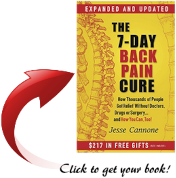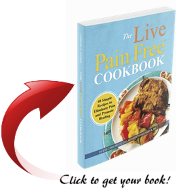The idea that movement is good for pain relief has been supported by a number of studies and is widely accepted by healthcare professionals. Though it sounds a bit crazy to move when you are in pain, research has shown that certain types of movement can be effective in reducing pain and improving overall physical function. I am not a medical professional and the following information is not medical advice. However, I find it helpful and wanted to share them with you.
Movement can provide physical pain relief in several ways:
- Increases blood flow and oxygenation. Movement increases blood flow and oxygenation to the muscles and tissues, which can help reduce inflammation and promote healing.
- Releases endorphins. Exercise stimulates the release of endorphins, which are natural painkillers produced by the body. Endorphins can help to reduce pain and improve mood.
- Improves flexibility and range of motion. Movement can help to improve flexibility and range of motion, which can reduce pain and stiffness in joints and muscles.
- Promotes relaxation. Exercise can help to reduce stress and promote relaxation, which can help to reduce tension and pain in the body.
- Strengthens muscles and joints. Strengthening exercises can help to improve the strength and stability of muscles and joints, which can reduce pain and prevent future injuries.
The type of movement that can provide pain relief depends on the specific cause and location of the pain. However, some types of movement that can be effective for reducing pain include:
- Low-impact aerobic exercise. Walking, cycling, and swimming are all examples of low-impact aerobic exercise that can help to increase blood flow and release endorphins, which can reduce pain.
- Stretching and flexibility exercises. Gentle stretching and flexibility exercises, such as yoga or tai chi, can help to reduce muscle tension and improve joint mobility, which can be helpful for reducing pain.
- Strength training. Bodyweight, resistance band and water exercises can help to strengthen muscles and improve posture, which can reduce pain in the neck, back, and other areas.
- Physical therapy. A physical therapist can develop an individualized exercise program that is tailored to your specific needs and limitations, which can be helpful for reducing pain caused by injury, surgery, or chronic conditions.
- Mind-body exercises. Mind-body exercises, such as meditation, guided imagery, or deep breathing, can help to reduce stress and promote relaxation, which can be helpful for reducing pain caused by tension or anxiety.

Overall, movement can provide physical pain relief by improving blood flow, releasing endorphins, improving flexibility and range of motion, promoting relaxation, and strengthening muscles and joints.
It’s important to consult with a healthcare professional before starting a new exercise program, especially if you have a medical condition or are experiencing chronic pain. They can help to develop an individualized plan that is safe and effective for your specific needs.
To Your Success & Freedom,
Glenn Shimabukuro




